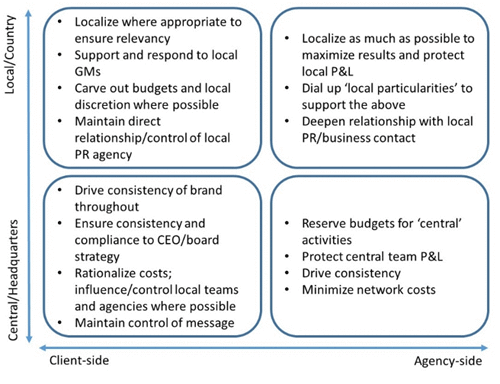
What Tinder Reveals About the Price (and Value) of Privacy
- September 12, 2017
- Roger Darashah

Adfactors has given me the freedom to think, be creative, and opportunities to learn.
Nikhil Mansukhani Senior Account Director

The conflict at the heart of global accounts
I was introduced to the Prisoner’s Dilemma while studying economics at university. It uses game theory to demonstrate the limits of so-called ‘rational’ decision-making; why two completely rational individuals might not cooperate, even if it appears that it is in their best interests to do so1. It sounds very academic, but it has multiple applications in the context of negotiating, trading and – even – public relations. Such analysis can help to explain some of the stresses and tensions at the heart of some of the world’s largest networked accounts.
Having worked on many such examples on the agency side – from HP and eBay in Europe to LinkedIn and AMD in Latin America – I’ve written about the contradictions in previous blogs2. But I think that the ‘Prisoner’s Dilemma’ metaphor provides unique clarity. Let me explain using the quadrant below, which represents a simplified structure of the motivations and metrics for each party – agency and client side.

If each party acts ‘rationally’, tension is inevitable. It is particularly strong on the agency side; central, coordinating teams are increasingly charged with driving consistency and cost reduction across the network. The latter is a standard logic behind the appointment of single agency networks. Local firms are ultimately measured on their P&L which depends on precisely the opposite. In the extreme case, either valuable senior counsel will be removed from the local account since activities are reduced to the tactical, or local teams will work ‘incognito’ with their in-country client counterparts to identify and tap local budgets. The latter is considered a form of ‘contraband’ with respect to the centralised model on which the global account was supposed to be based. Agency central teams find themselves in the position of ‘customs officer’ on behalf of their central client masters, trying to validate (or minimise) local ‘exceptions’ to justify their own fees; a process which puts them at odds with their agency counterparts in the countries that are measured – in agency P&L terms – on precisely such ‘smuggling’.
The agency-side conflict becomes even more acute when the central team (for example, in London or New York) simultaneously plays the local role for its home market (i.e. in these cases, the UK or US, respectively). The rational account planner will tend to develop campaigns and apportion budgets that favour his/her local market; this is inevitable from an account and an agency performance perspective. Sophisticated planners may provide justification for these priorities based on market data, comparative costs and the brand’s marketing strategy, but – sooner or later – the local agency GM’s priorities will inevitably favour the home market. Again, entirely rational behaviour which actually compromises the global account. If local markets are aware of this ‘parallel’ rationale for provisioning campaigns and budgets, they will redouble their efforts to source alternative budget sources from their local clients; in absolute contradiction to the global brief. And this is without considering the damage such duplicity can inflict on relationships between central and local teams, on both the agency and the client side.
And the latter should not be underestimated. PR is an emotional process; teams are required to invest and leverage their intellect, creativity, reasoning, logic, and relationships to propagate the given message. Often, huge numbers of people are required to be convinced and/or cajoled regarding the merits of a particular campaign. Trust between central and local teams is fundamental.
So, what’s the answer to PR’s Prisoner’s Dilemma? If only it were that simple…
The most important step is to recognise the existence inevitability of the conflict; local PR managers want liberty to express themselves, be creative and implement ideas that strike a chord in their local markets. Local agencies are similarly motivated, and they are perfectly entitled to develop such accounts if local budgets are available. In contrast, central teams (clients and agencies) are increasingly driven and measured by cost consolidation, and the capacity to ‘sweat’ content across as many platforms and markets as possible.
Open dialogue, the establishment of protocols, and the willingness of all parties to be flexible are the surest tools of all. In closing, I’ll share one learning which I picked up supporting international accounts from Paris a decade ago, but which is just as relevant today; in the dialogue between central and local teams, don’t waste time on what can’t be achieved in a particular market for various legitimate (or illegitimate) reasons — rather on what can.
[1] https://en.wikipedia.org/wiki/Prisoner%27s_dilemma
[2] http://blog.adfactorspr.com/perspectives/confessions-of-a-global-pr-veteran-just-dont-tell-the-global-team/
Published by Roger Darashah
Roger Darashah brings close to 23 years of international communications experience with stints in the UK, France, Spain, India and Brazil. He is part of the senior management team at Adfactors PR, working in the capacity of Chief Operating Officer.
Related Post



